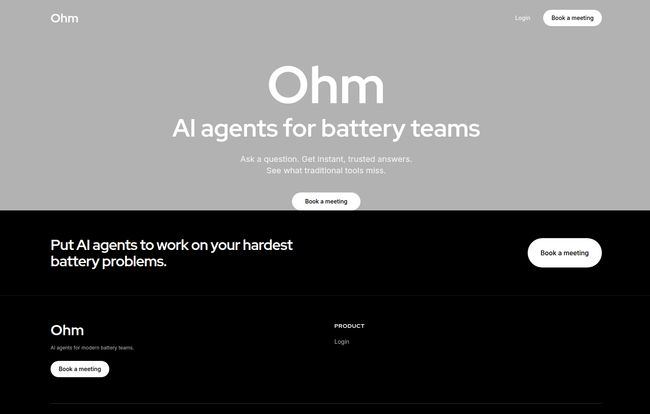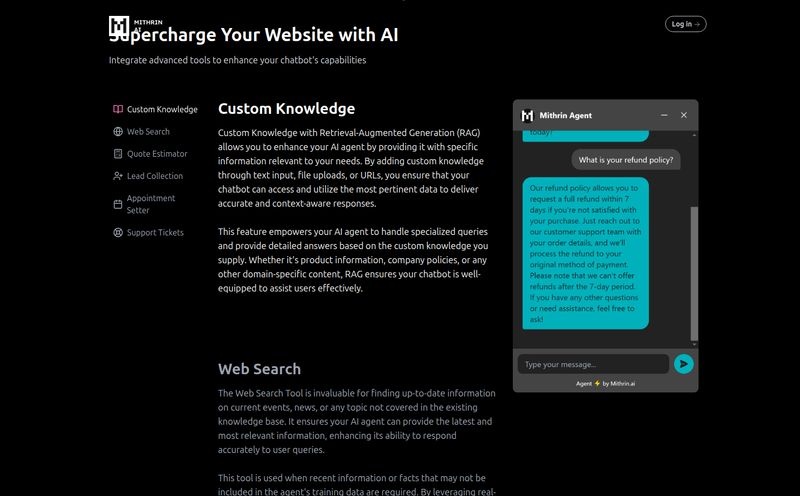If you’ve ever worked in battery R&D, you know the feeling. You’re sitting on a mountain of data—terabytes of it, probably—from cyclers, environmental chambers, and electrochemical impedance spectroscopy. You know the answer to your problem is buried in there somewhere. A subtle clue about why one batch of cells is degrading faster than another, or the secret sauce to extending cycle life. But getting to it? That’s another story.
For years, this has meant wrestling with custom Python scripts, wrangling monstrous CSV files, or begging for time from the one data scientist on staff who understands both MATLAB and battery chemistry. It's a slow, painstaking process. It feels less like cutting-edge science and more like digital archeology. You spend more time digging than you do discovering.
I’ve seen brilliant engineering teams get completely bogged down by this data logjam. It’s not just frustrating; it’s a genuine bottleneck to innovation in a world that’s screaming for better, safer, and longer-lasting batteries. So, when a tool comes along that promises to change that entire dynamic, I sit up and pay attention.
The Data Logjam in Battery R&D
Let's be honest, the way most teams handle battery testing data is… well, a bit broken. We’ve got these incredibly sophisticated machines generating insanely precise data, and we’re often analyzing it with tools that feel a decade old. It’s like having a Formula 1 car but being forced to drive it on a cobblestone road.
The core issue is one of translation. The data speaks in voltages, currents, and impedance curves. You, the engineer, speak in terms of performance, degradation, and state of health. Getting from one to the other has always required a translator—usually in the form of code. This creates a dependency that slows everything down. Got a new hypothesis? Great. Go write a new script, debug it, run it, and maybe you'll have an answer by Thursday. Maybe.
So, What Exactly is Byterat and its AI Agent, Ohm?
This is where Byterat steps into the picture with its flagship product, Ohm. Forget the jargon for a second. At its heart, Ohm is an AI agent designed to be a battery engineer's best friend. Think of it as a super-smart assistant who not only manages all your testing data but also understands it. And the best part? You can talk to it.
Yes, you read that right. Ohm’s killer feature is its natural language interface. Instead of writing lines of code, you ask questions in plain English. It’s built on a data platform designed from the ground up for the unique challenges of battery data. As they put it, you can simply: “Ask a question. Get instant, trusted answers.”
This isn’t just about convenience. It’s a fundamental shift. It democratizes data analysis within a team. The materials scientist, the cell engineer, the quality control manager—they can all interrogate the data directly, without needing to become programmers first. It’s a pretty compelling idea, and its a potential game-changer for a lot of labs.

Visit Byterat
Moving Past the "404: Insight Not Found" Error of Traditional Tools
Have you ever spent a whole afternoon trying to get a script to run, only to have it crash and burn? Or finally plotted a graph that just... makes no sense? You know the insight is there, but your tools just hit a wall. It’s the technical equivalent of a big, fat 404 NOT_FOUND error. The resource you were looking for—the critical insight—could not be located.
This is the exact problem Ohm seems engineered to solve. It’s not just a prettier dashboard or a faster query engine. It's an "agent." That word is important. It implies a level of autonomy and contextual understanding that goes beyond simple tools. Ohm is designed to comprehend the intent behind your question. It knows what a "degradation curve" is. It understands the relationship between temperature and performance. It’s designed to see what traditional tools miss, finding those subtle correlations that might otherwise remain buried.
How Ohm Changes the Game for Engineering Teams
The implications here are pretty significant. It’s about more than just saving a bit of time.
From Code to Conversation
I can’t stress this enough. The move from a rigid, code-based interface to a conversational one is huge. Imagine being able to ask your entire dataset things like:
- "Show me the average capacity fade for all cells from production line 3 after 500 cycles."
- "Is there a correlation between the formation temperature and first-cycle efficiency?"
- "Flag any cells that show an internal resistance increase of more than 15% in the first 100 hours of testing."
Suddenly, curiosity is rewarded, not punished with hours of tedious work. You can follow a train of thought, test hypotheses on the fly, and dig deeper and deeper with each question.
Uncovering the 'Unknown Unknowns'
The real magic of good AI is its ability to find patterns that we weren’t even looking for. Humans are great at testing hypotheses we already have. But what about the correlations we never thought to check? An AI agent like Ohm can sift through millions of data points and highlight unexpected relationships. Perhaps a minor variation in electrolyte viscosity has a surprisingly large impact on performance in cold weather. That’s the kind of discovery that can lead to real breakthroughs, and it's something a standard spreadsheet is never going to tell you.
Accelerating the Pace of Innovation
When you can get answers in seconds instead of days, your entire R&D cycle speeds up. You can validate new chemistries faster, optimize manufacturing processes more effectively, and get better products to market before the competition. In the insanely competitive world of battery tech—from EVs to grid storage—that speed is everything.
Let's Be Real: What's the Catch?
Okay, as an SEO and tech guy, I’m naturally skeptical. No tool is perfect. Based on what’s available, there are a couple of things to keep in mind. First, there’s likely a bit of a learning curve. Not in using the interface, but in learning how to ask the right questions to get the most out of an AI. It’s a new skill, a sort of Socratic dialogue with your data.
Second, the website is a bit light on the nitty-gritty technical details of its analysis capabilities. For some engineers who want to know exactly what algorithm is being used, this might feel a bit like a black box. You have to place a certain amount of trust in the agent's findings.
And then there’s pricing. You won’t find a pricing page on the Byterat website. The call to action is "Book a meeting." This is typical for high-value, B2B/enterprise software. It means pricing is almost certainly customized based on your team's size, data volume, and specific needs. So don't expect a simple monthly subscription fee. This is a serious investment for teams who are serious about their data.
Who is Byterat Ohm Really For?
This platform isn’t for the hobbyist building a battery pack in their garage. Byterat Ohm is aimed squarely at professional engineering teams at the forefront of battery technology. I’m talking about R&D labs at major automotive companies, consumer electronics giants, and the innovative startups working on next-generation energy storage solutions. If your team’s success hinges on extracting meaningful insights from massive, complex battery test datasets, then you are the target audience.
Conclusion
For too long, battery engineers have been forced to be part-time data scientists. It's a distraction from their real job: building better batteries. A tool like Byterat's Ohm represents a move in the right direction. It aims to handle the data complexity so engineers can focus on the science. It’s about turning the frustrating monologue of data analysis into a productive, insightful dialogue.
While I'm keen to see more case studies and technical deep dives, the promise is undeniable. Giving experts a direct, conversational line to their own data isn't just an upgrade; it feels like the future of engineering R&D. And in the race for our electric future, it might just be the advantage teams have been looking for.
Frequently Asked Questions (FAQ)
- What is Byterat Ohm?
- Byterat Ohm is an AI-powered data platform specifically for battery engineering teams. It uses an AI agent named Ohm to allow engineers to analyze complex battery testing data using simple, natural language questions instead of code.
- How does Ohm's natural language interface work?
- You type questions in plain English, just like you would ask a colleague. For example, "Compare the performance of batch X and batch Y." The AI agent, Ohm, is trained to understand the context of battery engineering and translates your question into a data query, performing the analysis and returning an answer.
- Is Byterat Ohm suitable for small labs?
- While it could benefit any lab, the "Book a meeting" pricing model suggests it's primarily designed for larger R&D teams and enterprises where the cost can be justified by the significant acceleration in research and development cycles.
- What kind of data can I analyze with Ohm?
- It's designed to handle the vast amounts of data generated during battery testing, including cycler data (voltage, current, capacity), temperature data, impedance spectroscopy results, and other time-series data related to battery performance and health.
- How much does Byterat Ohm cost?
- Byterat does not list public pricing. You need to contact their sales team and book a meeting to get a custom quote. This enterprise pricing model is typical for specialized software and is based on factors like team size, data volume, and required features.
- Do I need to be a data scientist to use Ohm?
- No, and that's its main selling point. The platform is designed to be used directly by battery engineers, materials scientists, and other domain experts who don't necessarily have a background in coding or data science.
Reference and Sources
- Byterat Official Website
- Nature Reviews Materials: The challenge of battery data - An academic perspective on the complexities of managing battery data, highlighting the need for better tools.



